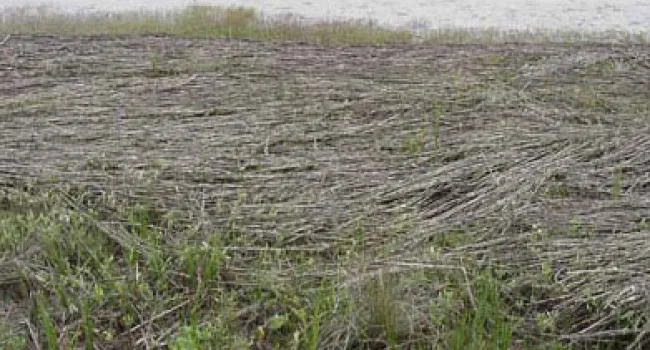
Photo
Blue crabs are active predators and effective scavengers. They occur throughout the estuary. They can swim by using their last pair of legs, which have been modified into paddles instead of walking...
Take a virtual field trip to a South Carolina cove forest and a salt marsh. These virtual field trips were produced in collaboration between Clemson University's SC LIFE Project and South Carolina ETV. The virtual field trips were designed specifically for schools lacking easy access to natural areas.
The SC LIFE Project, supported by an award to Clemson University from the Howard Hughes Medical Institute Undergraduate Science Education Program, uses the natural history of South Carolina (and the Southeast) to illustrate basic biological concepts and to stimulate inquiry-based learning. The SC LIFE Program serves elementary, middle and high school students and teachers. The target grade level of the SC LIFE Virtual Field Trips content is middle school.
SC LIFE materials are available for use only in non-profit educational activities. Any other uses, including activities involving fees for instruction and/or materials, must receive permission from the SC LIFE Project Director. Contact SC LIFE Project Office, 132 Long Hall, Clemson, SC 29634, 864-656-4224, with questions about any of our SC LIFE materials or programs.

Photo
Blue crabs are active predators and effective scavengers. They occur throughout the estuary. They can swim by using their last pair of legs, which have been modified into paddles instead of walking...
Photo
Almost all trees in cove forests are deciduous - that is, they drop their leaves in the fall and produce new ones in spring. The Canada hemlock, in contrast, is an evergreen - it retains its needle...
Photo
(Viola canadensis) This relatively tall violet with heart-shaped leaves is frequently encountered in cove forests. It produces many white flowers that fade to purple with age. Often found in clumps...
Photo
(Halesia tetraptera) This small to medium-sized understory tree has distinctive white-yellow vertical streaks on its young stems. In early spring it produces white bell-shaped flowers that develop...
Photo
(Polystichum acrostichoides) This evergreen fern commonly occurs in moist sites including ravines and rocky slopes. Only the leaves emerge above ground - the stem is underground. Like all ferns, it...
Photo
Clapper rails live their whole lives in the salt marsh. They even nest in clumps of Spartina just above the water. The downy black young are hard to see against the dark marsh mud. Both the adults and...
Photo
The most abundant animals in the plankton are copepods, such as the one pictured. As adults, they are less than 1 millimeter in length. The abundance and diversity of plankton species are highest in...
Photo
(Agkistrodon contortrix) The copperhead is the primary poisonous snake in the cove forest. The pit located on each side of the head between the eye and the nasal opening is a heat sensor. The prey...
Photo
Detritus is the collection of dead stems of Spartina and other things that float. This combination of materials floats up in the marsh during high tides, and winds often drive it ashore, where it...
Photo
This evergreen shrubs forms dense thickets in ravines and along streams. The leaves are thick and leathery and the urn-shaped fragrant flowers bloom in early spring.